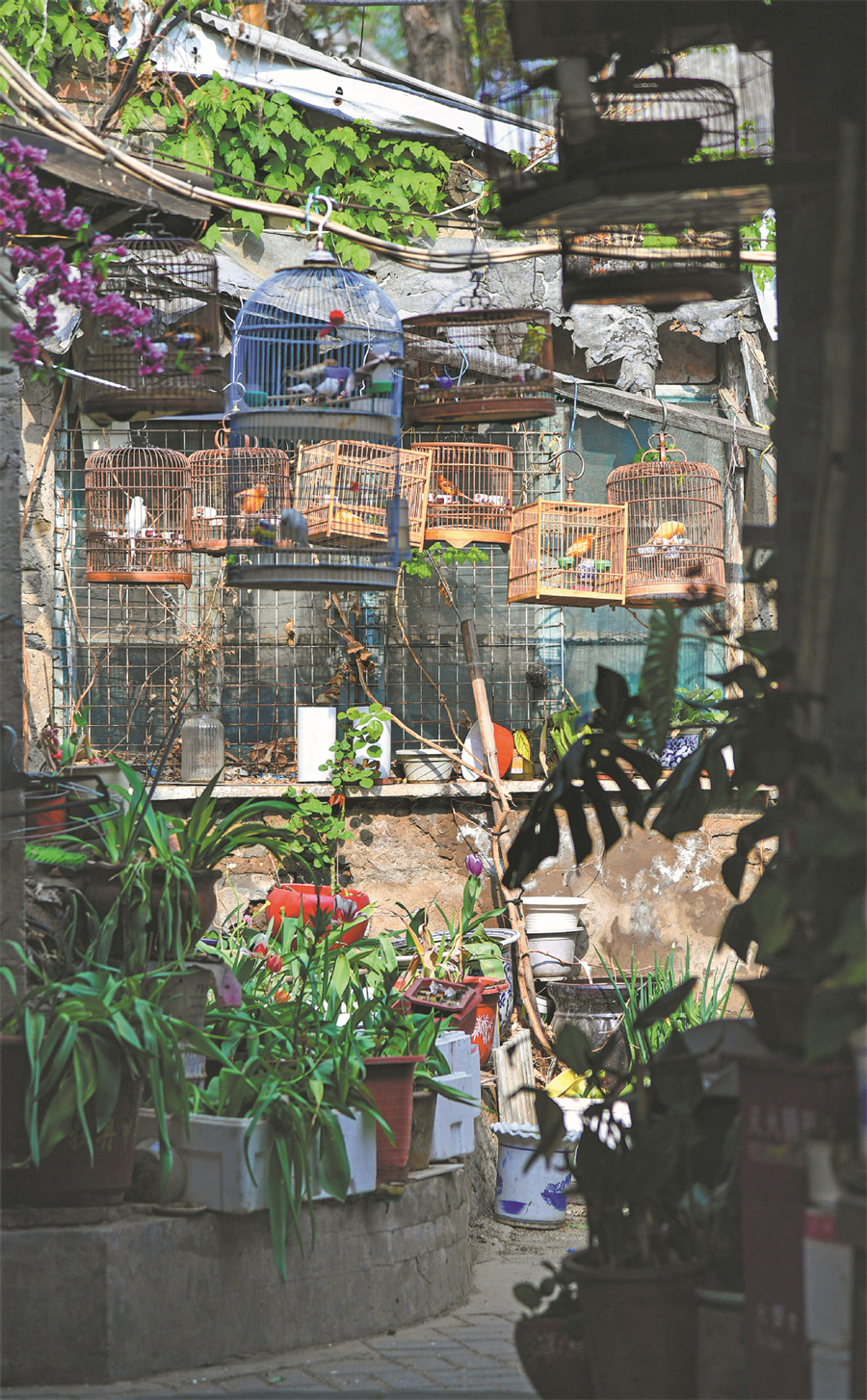Residents feel the benefits of hutong revamps

A courtyard in Gongjian hutong boasts many bird cages. [Photo/China Daily]
Courtyard turfed
Neighbors, inspired by Sun's initiative, carried out similar improvements to their properties.
Moreover, Sun's hobby of growing crops such as scallions, cilantro, small chili peppers and mint in pots under his window has been encouraged by community workers.
Residents turfed a corner in the southeast of the courtyard to grow crab apples and roses, adding a touch of greenery to the area.
"Everyone is getting out more to enjoy spending time in this public space," Sun said.
Changes have also been made to many other courtyards in Beijing's hutong areas as part of continuous efforts made by the city authorities in recent years to improve such environments.
In 2017, the Beijing Urban Master Plan (2016-2035) was approved. The plan states that the old city should no longer be demolished, and that restoration and reconstruction should be carried out to preserve as much of it as possible.
By the end of 2019, comprehensive improvements had been made to more than 3,000 back alleys and streets.
In 2020, the city launched a new action plan to renovate small alleys and streets, and by the end of last year, more than 3,200 of them had been given facelifts and upgraded public facilities.
Wu Chen, chief architect at the Beijing Institute of Architectural Design, said that over the years, the preservation and enhancement of the city's historical blocks have retained the layout and appearance of hutong and courtyards, the historical context of the ancient capital, neighborhood bonds, and the way of life of old-generation Beijingers.
The courtyard has been a traditional part of local architecture throughout Beijing's history, and an important part of traditional blocks in the city, added Wu, who has led a team involved in protecting and restoring such blocks for nearly two decades.
























